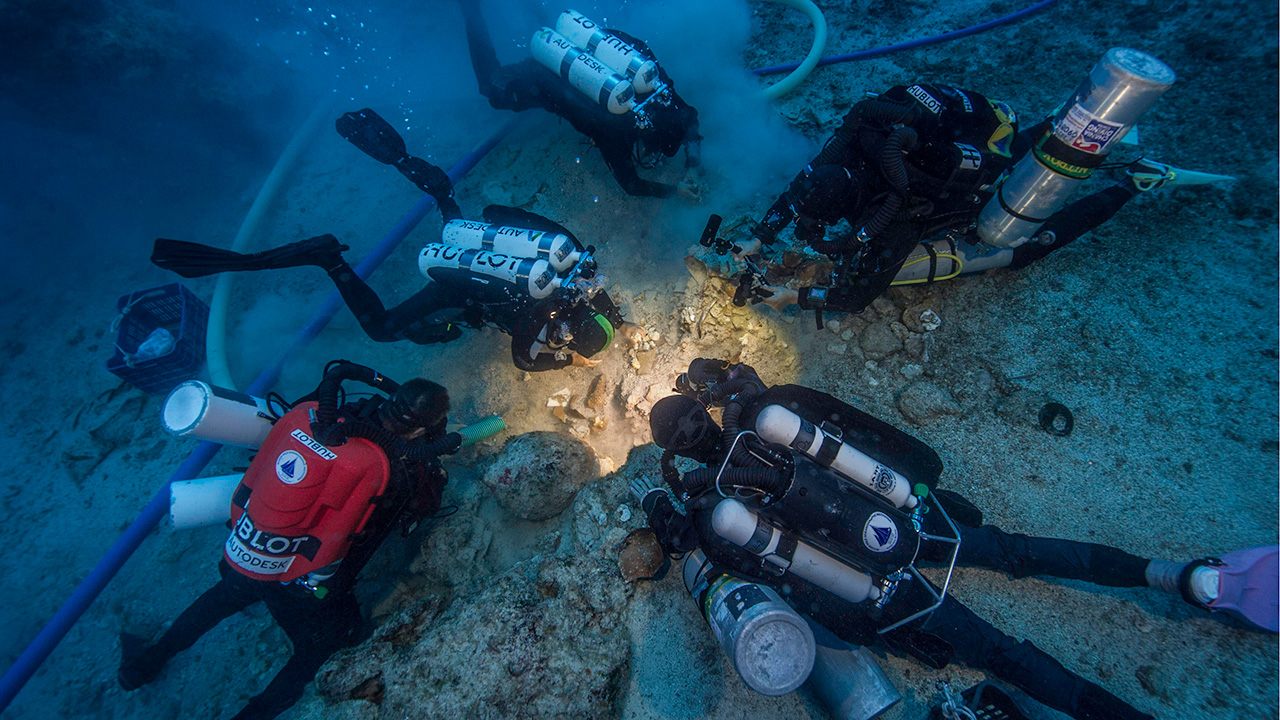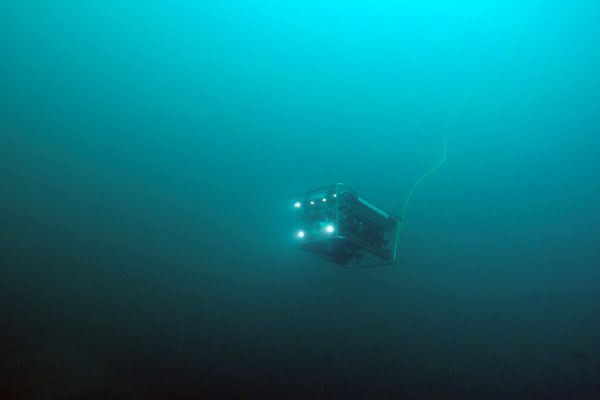Found: A 2,000-Year-Old Skeleton at the Antikythera Wreck
Archaeologists made a new discovery at the site where the world’s oldest computer was found.

Divers at the wreck site examining the bones. (Photo: Brett Seymour, EUA/WHOI/ARGO)
Since 1900, when Greek divers first discovered it, the Antikythera shipwreck has been one of the most exciting troves of information about the ancient world. Not long after the wreck was first found, divers came upon the mysterious Antikythera mechanism, a piece of ancient technology made of complicated clockwork, sometimes called the world’s first analog computer. It’s lent the wreck an aura of mystery: Who were the people on the ship? How did they use this fabulous object?
In August, archaeologists made another discovery, reported in Nature, that will help them better understand this wreck—a well-preserved skeleton of a person who could become the first victim of an ancient shipwreck to have their DNA sequenced.
Skeletons have been found at the site before. In the 1970s, a team led by Jacques Cousteau brought up many human remains, but those bones were preserved with methods unfriendly to DNA analysis. This newly discovered set of bones includes the petrous bone, the Guardian reports, a part of the skull where DNA tends to be well preserved.
The scientists are waiting for permission from the Greek authorities to actually sequence the DNA. They believe the skeleton belongs to a man who was in his early 20s when he died; by sequencing the DNA, they could find out what he looked like and where he came from. It’ll one more clue to understanding the life of this ship and its precious cargo.








Follow us on Twitter to get the latest on the world's hidden wonders.
Like us on Facebook to get the latest on the world's hidden wonders.
Follow us on Twitter Like us on Facebook